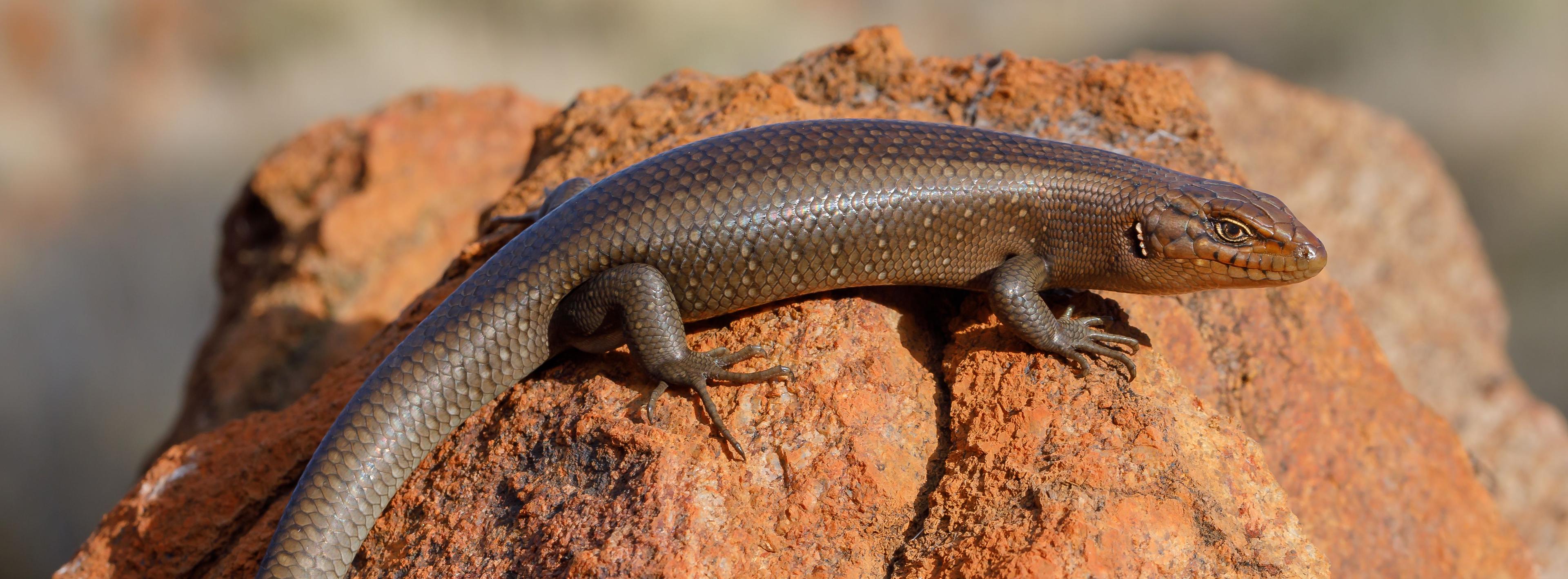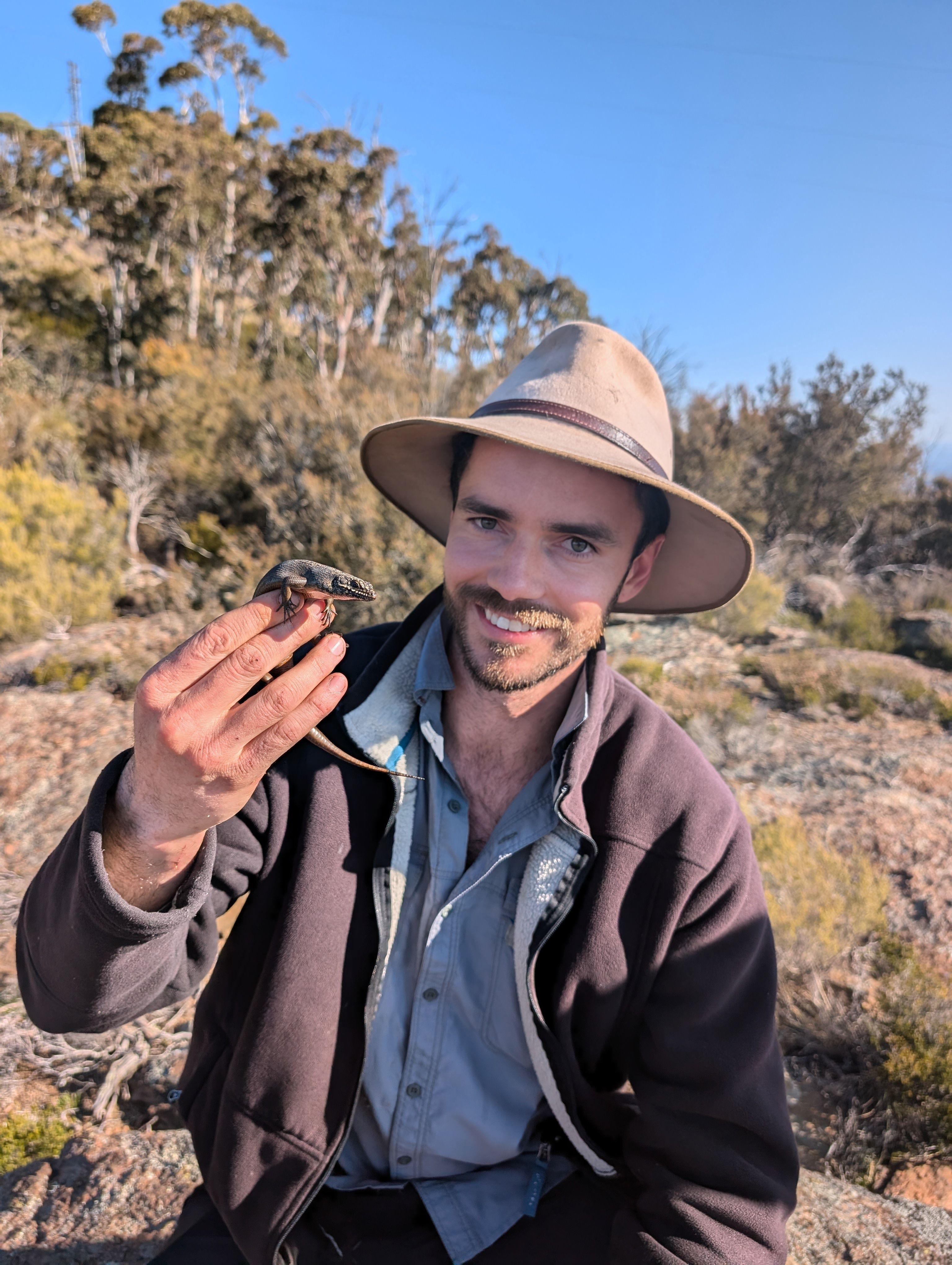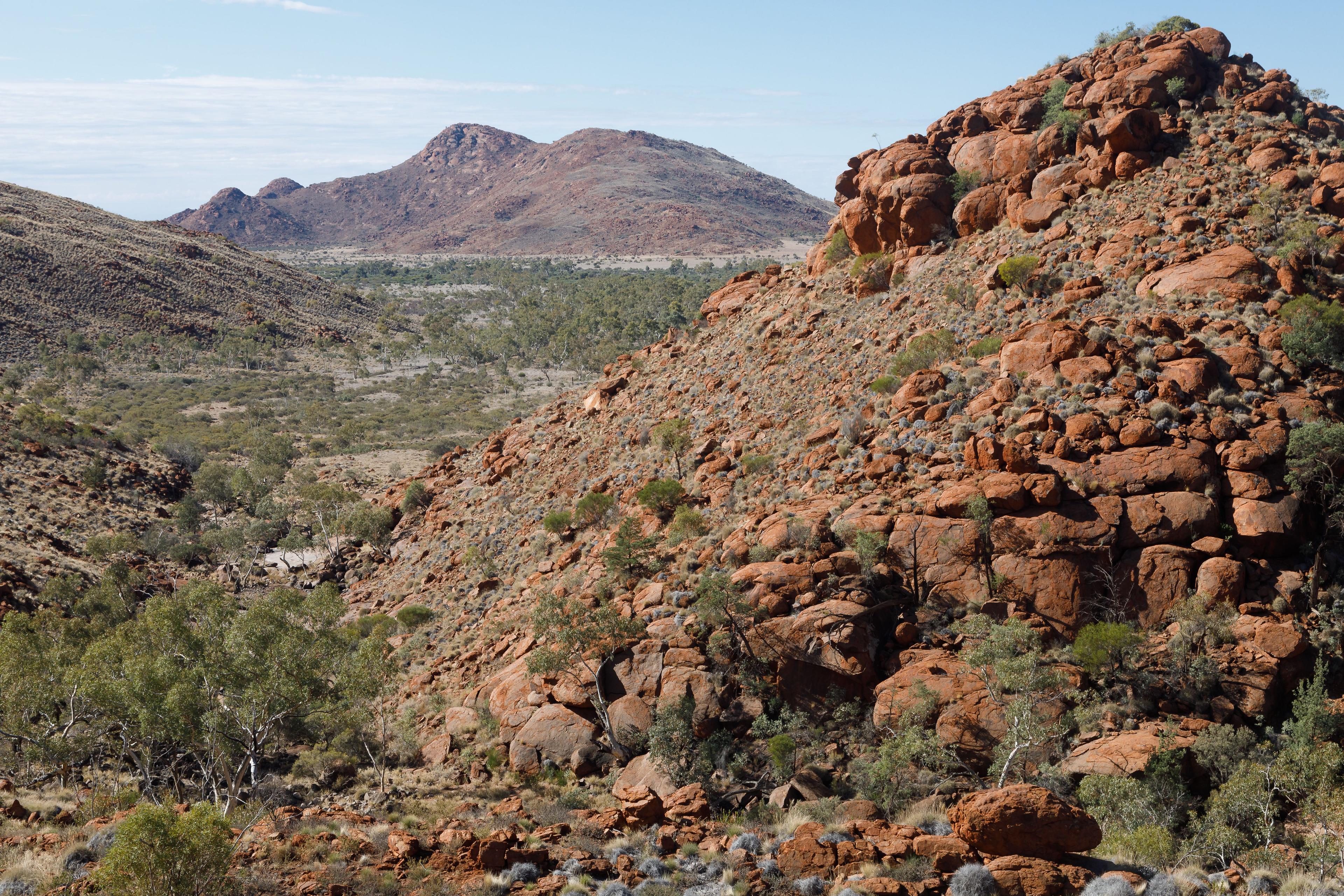Monash University scientists and Aboriginal rangers discover new lizard species in Central Australian desert mountains

An adult lizard from the newly discovered species, Liopholis aputja, in Alalkanya Gorge. Image source: Jules Farquhar
News story
12 November 2024
A new species of skink, Liopholis aputja, has been discovered in the mountain ranges of the Central Australian desert in north-west SA. The discovery was a partnership between Biodiversity Council Early Career Researcher Jules Farquhar from Monash University and Aboriginal rangers from Aṉangu Pitjantjatjara Yankunytjatjara (APY) Lands.
We chatted with Jules to understand what the discovery means to him and to the conservation of the species.
How does it feel to discover and describe a new species?
As a herpetologist, it's quite a privilege to be in a position where I can uncover the diversity of Australia's reptiles. I've always been especially interested in arid zone lizards, so it's an honour to be able to add a new one to the list of known species. It's been great to collaborate with the rangers, traditional owners and knowledge holders across APY [Aṉangu Pitjantjatjara Yankunytjatjara] Lands to bring this project together.
Why study reptiles?
Reptiles have always fascinated me, so I'm spoiled to live in Australia given it's a hotspot for reptile diversity and endemism. In particular, we have more species of skinks in Australia than anywhere on earth, and I'm perfectly willing to squander a lifetime studying them — I reckon they deserve it!

Researcher Jules Farquhar holding the Critically Endangered Kaputar rock skink, Egernia roomi, another rare Australian skink species restricted to a mountain range. Image source: Jules Farquhar.
Why is it important to describe and name species?
Taxonomists play an important part in rectifying the problem of the 'Linnean Shortfall', which is the idea that we have a large gap in our knowledge of the full diversity of species on Earth, due to many species remaining undiscovered. This is a huge problem because it impacts conservation efforts, land management, and biodiversity policy.
Biodiversity conservation is already an uphill battle for scientists and conservation practitioners—so imagine how hard it is to conserve a species we don't even know exists! The folks in APY Lands really take good care of their Country, and it's likely that this species can receive more tailored monitoring and management now that it's recognised as a distinct species endemic to the region.

The new skink has been found in the mountain ranges of north-west South Australia in Alalkanya Gorge. Image source: Jules Farquhar.
Do you have any concerns for the long-term survival of this species?
At this stage, the conservation and ecology of this species is poorly understood, although we are working on a separate project looking at this. We suspect the species occurs throughout much of the Mann-Musgrave Ranges in South Australia, and potentially has a large extent of occurrence.
Having said that, the region is impacted by the invasive buffel grass, a plant which we know has been implicated in the decline and disappearance of another member of the Liopholis genus (the Slater's skink, Liopholis slateri). So it may be impacting this new species too. We really need further investigation into the potential impacts of feral predators and grazers, weed encroachment and fire regimes on the species.
You can find Jules' research paper about the discovery here or read more at ABC News.













